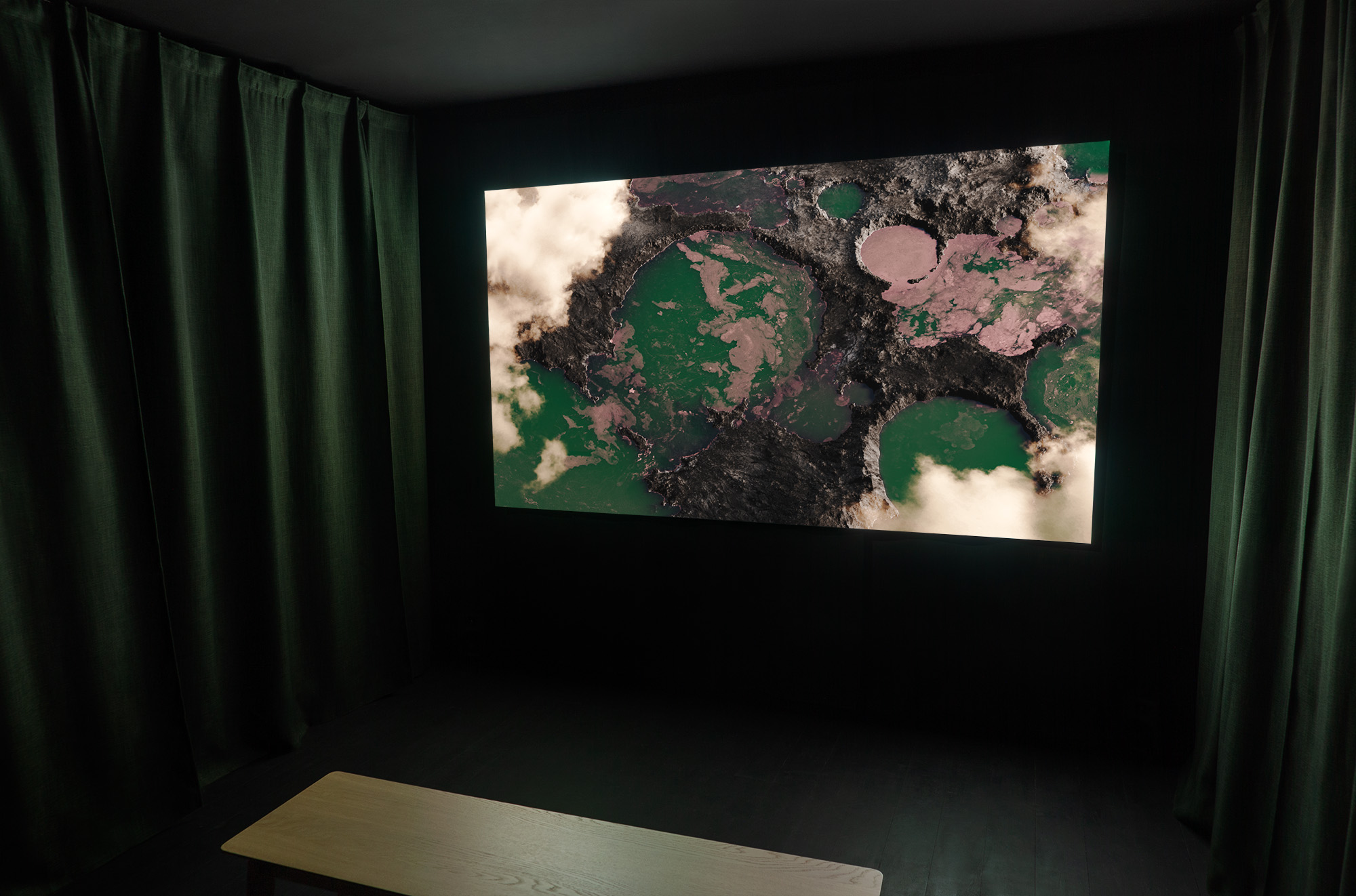The World Before Eyes
K4 Galleri
June 9 - 25, 2023
3D animation
2m 30s loop
The World Before Eyes is a portrait of Earth 3.5 billion years ago. Using 3D animation, this video takes us to imagined landscapes of a time when our planet was entirely unrecognizable as the ‘Blue Marble’ we know it today. While our understanding of the early history of the planet is itself under constant evolution, a picture has slowly begun to resolve.
A shallow teal-green ocean covered nearly the whole globe. As the air and water were essentially devoid of oxygen, an iron mineral called ‘green rust’ was freely dissolved in the water, tinting the oceans this shade of green. Only about 2-3% of the planet had dry land in the form of raw, rocky islands, riddled with volcanoes and craters from asteroid impacts.
The sky was far from being blue: levels of methane in the atmosphere may have been high enough to turn the sky a yellowy-orange, similar to the atmosphere we currently see on Saturn’s moon, Titan.
Our new neighbor, the Moon, was undergoing an upheaval. The large, dark basaltic plains still visible on the surface were being formed by asteroid impacts on the far side of the moon, triggering massive volcanic activity on the opposite side, facing Earth.
What makes this moment in time particularly special is that the earliest fossils confirming life date back to this era. These fossils, called stromatolites, are mound-like mineral structures formed through the layering of sediments produced by colonial microbial mats. These formations dominated the shallow waters for much of Earth’s early history.
Though we don’t know for certain what colors early life may have been, there is a hypothesis some organisms used a rosy purple molecule called retinal to generate their metabolic energy from sunlight, which likely predates the evolution of more complex photosynthesis using familiar green chlorophyll later on. The earliest color of life we know for certain, found in 2.7 billion year old cyanobacteria fossils, is a warm pink.
![]()
![]()
![]()
K4 Galleri
June 9 - 25, 2023
3D animation
2m 30s loop
The World Before Eyes is a portrait of Earth 3.5 billion years ago. Using 3D animation, this video takes us to imagined landscapes of a time when our planet was entirely unrecognizable as the ‘Blue Marble’ we know it today. While our understanding of the early history of the planet is itself under constant evolution, a picture has slowly begun to resolve.
A shallow teal-green ocean covered nearly the whole globe. As the air and water were essentially devoid of oxygen, an iron mineral called ‘green rust’ was freely dissolved in the water, tinting the oceans this shade of green. Only about 2-3% of the planet had dry land in the form of raw, rocky islands, riddled with volcanoes and craters from asteroid impacts.
The sky was far from being blue: levels of methane in the atmosphere may have been high enough to turn the sky a yellowy-orange, similar to the atmosphere we currently see on Saturn’s moon, Titan.
Our new neighbor, the Moon, was undergoing an upheaval. The large, dark basaltic plains still visible on the surface were being formed by asteroid impacts on the far side of the moon, triggering massive volcanic activity on the opposite side, facing Earth.
What makes this moment in time particularly special is that the earliest fossils confirming life date back to this era. These fossils, called stromatolites, are mound-like mineral structures formed through the layering of sediments produced by colonial microbial mats. These formations dominated the shallow waters for much of Earth’s early history.
Though we don’t know for certain what colors early life may have been, there is a hypothesis some organisms used a rosy purple molecule called retinal to generate their metabolic energy from sunlight, which likely predates the evolution of more complex photosynthesis using familiar green chlorophyll later on. The earliest color of life we know for certain, found in 2.7 billion year old cyanobacteria fossils, is a warm pink.


